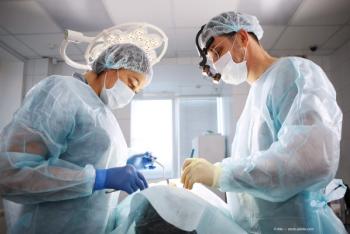
Arsham Sheybani, MD, offers insight on how his glaucoma patient management protocols have altered and the shift in subconjunctival surgery in light of the pandemic.

Arsham Sheybani, MD, offers insight on how his glaucoma patient management protocols have altered and the shift in subconjunctival surgery in light of the pandemic.
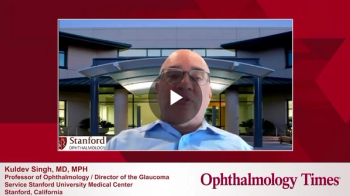
Kuldev Singh, MD, MPH, professor/director of the Glaucoma Service Stanford Medical Center, shares the highlights from his discussion on surgical procedure decision-making in the era of MIGS.

Shan C. Lin, MD, co-research director, Glaucoma Center of San Francisco, speaks on the highlights from his presentation on the latest in the three forms of cyclophotocoagulation commonly used by clinicians.

J. Michael Jumper, MD, a retinal specialist at West Coast Retina (San Francisco, CA), discusses the highlights of his Glaucoma 360 presentation analyzing the impact and lasting effects of intraocular injections and retinal diseases in creating glaucoma as well as the evolving collaboration between retinal and glaucoma specialists.

L. Jay Katz, MD, of the Wills Eye Hospital, Philadelphia, PA, discusses the highlights of his Glaucoma 360 presentation on secondary glaucoma due to intravitreal steroids, and what ophthalmologists can do to minimize the risk of severe visual impairment in patients.

Drops can simplify dosing, improving adherence and ocular surface health

Tom Mitro, president, COO of Aerie Pharmaceuticals, discusses the key highlights from an industry panel discussion titled "Innovate without borders," held during the Glaucoma 360 New Horizons Forum, including the company's role in expanding into the global glaucoma therapeutics market.

Intraocular drainage surgery may have a future for treating issues.

Consider ideas about outflow pathways, neuroprotection.

Results of a survey among ophthalmologists indicate that patients are receiving fewer examinations — with worsening glaucoma, says S. Fabian Lerner, MD, speaking at the Glaucoma 360 New Horizons Forum.

A new therapy provides noninvasive nighttime IOP control by programming the desired pressure into the device, explained John Berdahl, MD, during the New Horizons Forum.

Glaukos Corporation's COO Chris Calcaterra gives an update on the company's latest 24-month phase 2b data for its iDose TR sustained-release travoprost implant, next steps for securing FDA approval, and his outlook for 2021.
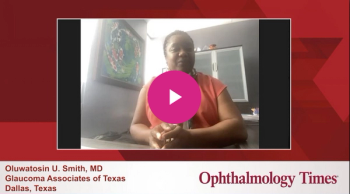
Oluwatosin U. Smith, MD, Glaucoma Associates of Texas, provides an update on optimization and surgical modifications of newer glaucoma surgeries.
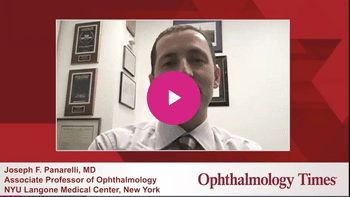
Joseph F. Panarelli, MD, associate professor of ophthalmology, NYU Langone Medical Center, shares some clinical pearls for managing masquerade syndromes and determining when it is not glaucoma.

Donald L. Budenz, MD, MPH, shares the key takeaways from his Shaffer-Hetherington-Hoskins Lecture, focusing on glaucoma epidemiology, presented during the 2021 Glaucoma 360's 25th Annual Glaucoma Symposium CME.
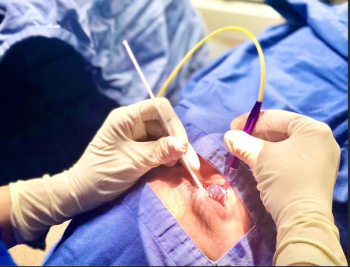
Noninvasive option reduces IOP in patients with glaucoma.

The traditional treatment for primary angle-closure (PAC) and PAC glaucoma (PACG) is laser peripheral iridotomy (LPI) to facilitate aqueous outflow followed by medical treatment with drops to decrease the intraocular pressure (IOP).

Sunita Radhakrishnan, MD, in a presentation at the 25th annual Glaucoma Symposium at the Glaucoma 360 virtual annual event, noted that concomitant treatment of both glaucoma and dry eye is key.

Robert L. Stamper, MD, discusses the findings of a study analyzing the effects of corneal mechanics on IOP, presented during the virtual Glaucoma 360 meeting.

During the 2021 Glaucoma 360 meeting, Ruth D. Williams, MD, speaks on the highlights and key findings from the EAGLE study, which showed clear lens extraction surgery may be a better initial treatment for some glaucoma patients.

Amid a pandemic, the Glaucoma Research Foundation is holding its annual gala online, funding aspirations for a glaucoma-free world with a goal of raising $1 million.

Two teams of researchers from Gyroscope Therapeutics and the University of Pennsylvania are joining forces to explore gene therapy targets for three specific serious eye diseases.

New options open possibilities for treatment, resulting in better outcomes for patients.

Thomas Samuelson, MD, speaks on the outcomes of a three-year trial analyzing the iStent inject trabecular micro-bypass + phaco versus phaco alone in patients with POAG.

In light of an unprecedented year filled with technological advancements and pivots, Joshua Mali, MD, offers his top 5 predictions in ophthalmology for 2021.